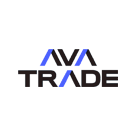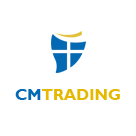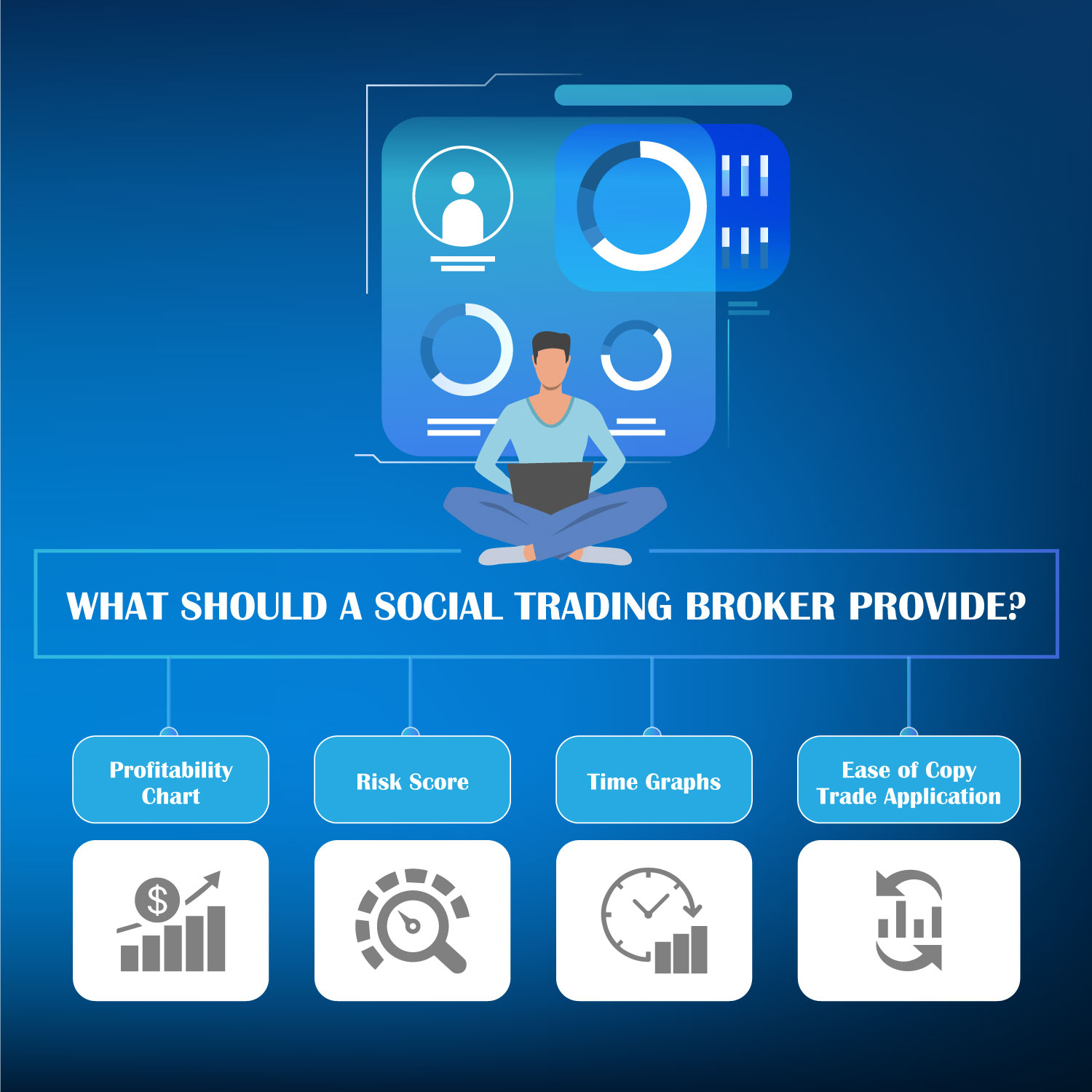Below you will find a list of Forex Brokers keeping own Social Trading Networks. Beside the option to trade in foreign exchange markets, clients have the opportunity to examine stats and copy trades of other network members. In essence, one can become either a signal provider or a signal receiver or both. Share your trading experience, compile investing portfolios, upgrade and develop trading strategies with help of others – there is a whole lot of possibilities when it comes to social trading. Most brokers have their own proprietary social platform with specific features. Therefore, it's highly recommended to take time and explore several networks before settling down.

 RoboForex (2009)
Leverage: up to 1:2000
Deposit: from 10 USD
Spreads:
RoboForex (2009)
Leverage: up to 1:2000
Deposit: from 10 USD
Spreads: 


















 Darwinex (2012)
Leverage: up to 1:30
Deposit: from 500 USD
Spreads:
Darwinex (2012)
Leverage: up to 1:30
Deposit: from 500 USD
Spreads: 





 AvaTrade (2007)
Leverage: up to 1:400 *
Deposit: from 100 USD
Spreads:
AvaTrade (2007)
Leverage: up to 1:400 *
Deposit: from 100 USD
Spreads: 














 NAGA (2015)
Leverage: up to 1:500
Deposit: from 50 USD
Spreads:
NAGA (2015)
Leverage: up to 1:500
Deposit: from 50 USD
Spreads: 












 eToro (2006)
Leverage: up to 1:400 *
Deposit: from 200 USD
Spreads:
eToro (2006)
Leverage: up to 1:400 *
Deposit: from 200 USD
Spreads: 









 IC Markets (2007)
Leverage: up to 1:500 *
Deposit: from 200 USD
Spreads:
IC Markets (2007)
Leverage: up to 1:500 *
Deposit: from 200 USD
Spreads: 










 Anzo Capital (2015)
Leverage: up to 1:1000
Deposit: from 100 USD
Spreads:
Anzo Capital (2015)
Leverage: up to 1:1000
Deposit: from 100 USD
Spreads: 


 LiteFinance (2005)
Leverage: up to 1:1000
Deposit: from 50 USD
Spreads:
LiteFinance (2005)
Leverage: up to 1:1000
Deposit: from 50 USD
Spreads: 











 Infinox (2009)
Leverage: up to 1:1000
Deposit: from 50 USD
Spreads:
Infinox (2009)
Leverage: up to 1:1000
Deposit: from 50 USD
Spreads: 








 iForex (2012)
Leverage: up to 1:400 *
Deposit: from 100 USD
Spreads:
iForex (2012)
Leverage: up to 1:400 *
Deposit: from 100 USD
Spreads: 



 ETX Capital (1965)
Leverage: up to 1:30
Deposit: from 100 USD
Spreads:
ETX Capital (1965)
Leverage: up to 1:30
Deposit: from 100 USD
Spreads: 




 Doo Prime (2014)
Leverage: up to 1:400
Deposit: from 100 USD
Spreads:
Doo Prime (2014)
Leverage: up to 1:400
Deposit: from 100 USD
Spreads: 







 ForexVox (2020)
Leverage: up to 1:500
Deposit: from 100 USD
Spreads:
ForexVox (2020)
Leverage: up to 1:500
Deposit: from 100 USD
Spreads: 







 CXM Trading (2019)
Leverage: up to 1:500
Deposit: from 2000 USD
Spreads:
CXM Trading (2019)
Leverage: up to 1:500
Deposit: from 2000 USD
Spreads: 





 M4Markets (2019)
Leverage: up to 1:1000 *
Deposit: from 5 USD
Spreads:
M4Markets (2019)
Leverage: up to 1:1000 *
Deposit: from 5 USD
Spreads: 









 AdroFx (2018)
Leverage: up to 1:500
Deposit: from 25 USD
Spreads:
AdroFx (2018)
Leverage: up to 1:500
Deposit: from 25 USD
Spreads: 








 PU Prime (2015)
Leverage: up to 1:1000
Deposit: from 50 USD
Spreads:
PU Prime (2015)
Leverage: up to 1:1000
Deposit: from 50 USD
Spreads: 




 CFI Financial (1998)
Leverage: up to 1:400 *
Deposit: from 50 USD
Spreads:
CFI Financial (1998)
Leverage: up to 1:400 *
Deposit: from 50 USD
Spreads: 




 Hantec Markets (1990)
Leverage: up to 1:500 *
Deposit: from 10 USD
Spreads:
Hantec Markets (1990)
Leverage: up to 1:500 *
Deposit: from 10 USD
Spreads: 











 GMI (2009)
Leverage: up to 1:2000
Deposit: from 15 USD
Spreads:
GMI (2009)
Leverage: up to 1:2000
Deposit: from 15 USD
Spreads: 




 ForexMart (2015)
Leverage: up to 1:3000
Deposit: from 15 USD
Spreads:
ForexMart (2015)
Leverage: up to 1:3000
Deposit: from 15 USD
Spreads: 







 Trio Markets (2014)
Leverage: up to 1:500
Deposit: from 100 USD
Spreads:
Trio Markets (2014)
Leverage: up to 1:500
Deposit: from 100 USD
Spreads: 






 Woxa (2019)
Leverage: up to 1:500
Deposit: from 25 USD
Spreads:
Woxa (2019)
Leverage: up to 1:500
Deposit: from 25 USD
Spreads: 

 TenTrade (2020)
Leverage: up to 1:500
Deposit: from 50 USD
Spreads:
TenTrade (2020)
Leverage: up to 1:500
Deposit: from 50 USD
Spreads: 






 Climax Prime (2021)
Leverage: up to 1:300
Deposit: from 10 USD
Spreads:
Climax Prime (2021)
Leverage: up to 1:300
Deposit: from 10 USD
Spreads: 







 Tibiglobe (2018)
Leverage: up to 1:500
Deposit: from 50 USD
Spreads:
Tibiglobe (2018)
Leverage: up to 1:500
Deposit: from 50 USD
Spreads: 

 Ultima Markets (2016)
Leverage: up to 1:2000 *
Deposit: from 50 USD
Spreads:
Ultima Markets (2016)
Leverage: up to 1:2000 *
Deposit: from 50 USD
Spreads: 





 DotBig (2016)
Leverage: up to 1:400
Deposit: from 100 USD
Spreads:
DotBig (2016)
Leverage: up to 1:400
Deposit: from 100 USD
Spreads: 








 Axon Markets (2023)
Leverage: up to 1:2000
Deposit: from 10 USD
Spreads:
Axon Markets (2023)
Leverage: up to 1:2000
Deposit: from 10 USD
Spreads: 











 Banxso (2023)
Leverage: up to 1:200
Deposit: from 300 USD
Spreads:
Banxso (2023)
Leverage: up to 1:200
Deposit: from 300 USD
Spreads: 


 UTrada (2018)
Leverage: up to 1:500
Deposit: from 1 USD
Spreads:
UTrada (2018)
Leverage: up to 1:500
Deposit: from 1 USD
Spreads: 



 Zetradex (2022)
Leverage: up to 1:3000
Deposit: from 1 USD
Spreads:
Zetradex (2022)
Leverage: up to 1:3000
Deposit: from 1 USD
Spreads: 








 Zero Markets (2017)
Leverage: up to 1:500
Deposit: from 100 AUD
Spreads:
Zero Markets (2017)
Leverage: up to 1:500
Deposit: from 100 AUD
Spreads: 






 DLSM (2025)
Leverage: up to 1:1000
Deposit: from 100 USD
Spreads:
DLSM (2025)
Leverage: up to 1:1000
Deposit: from 100 USD
Spreads: 

 NCE (2025)
Leverage: up to 1:1000
Deposit: from 200 USD
Spreads:
NCE (2025)
Leverage: up to 1:1000
Deposit: from 200 USD
Spreads: 

 WongaaFX (2025)
Leverage: up to 1:2000
Deposit: from 10 USD
Spreads:
WongaaFX (2025)
Leverage: up to 1:2000
Deposit: from 10 USD
Spreads: 






 Radex Markets (2019)
Leverage: up to 1:500
Deposit: from 100 USD
Spreads:
Radex Markets (2019)
Leverage: up to 1:500
Deposit: from 100 USD
Spreads: 


 CMTrading (2012)
Leverage: up to 1:200
Deposit: from 250 USD
Spreads:
CMTrading (2012)
Leverage: up to 1:200
Deposit: from 250 USD
Spreads: 





 UFX (2007)
Leverage: up to 1:400
Deposit: from 100 USD
Spreads:
UFX (2007)
Leverage: up to 1:400
Deposit: from 100 USD
Spreads: 












 Markets.com (2008)
Leverage: up to 1:300 *
Deposit: from 100 USD
Spreads:
Markets.com (2008)
Leverage: up to 1:300 *
Deposit: from 100 USD
Spreads: 







 Capex (2016)
Leverage: up to 1:300 *
Deposit: from 1000 USD
Spreads:
Capex (2016)
Leverage: up to 1:300 *
Deposit: from 1000 USD
Spreads: 





 Trade360 (2013)
Leverage: up to 1:100 *
Deposit: from 500 USD
Spreads:
Trade360 (2013)
Leverage: up to 1:100 *
Deposit: from 500 USD
Spreads: 





 Binarium (2016)
Leverage: up to ---
Deposit: from 5 USD
Spreads:
Binarium (2016)
Leverage: up to ---
Deposit: from 5 USD
Spreads: 








 Pocket Option (2017)
Leverage: up to ---
Deposit: from 10 USD
Spreads:
Pocket Option (2017)
Leverage: up to ---
Deposit: from 10 USD
Spreads: 













 Expert Option (2014)
Leverage: up to ---
Deposit: from 10 USD
Spreads:
Expert Option (2014)
Leverage: up to ---
Deposit: from 10 USD
Spreads: 












 1PrimeOptions (2024)
Leverage: up to ---
Deposit: from 30 USD
Spreads:
1PrimeOptions (2024)
Leverage: up to ---
Deposit: from 30 USD
Spreads: 




Social trading was a concept introduced into the forex market in 2006. The idea was to provide a system where traders with expertise could sell this knowledge to other traders who were less experienced or knowledgeable, in the form of trading signals. To put it in another way, the social trading platform would provide an engine which would permit less experienced traders copy the trades of the experienced ones, while engaging further on a less formal basis on the blog section of the platform. Those who copy the trades would pay a token for them, which would be split between the platform provider and the traders being copied.
The concept of social trading arose out of a great need to shorten the learning curve of traders, and to get them to start being profitable. What better way than to directly pick the brains of those who were already ahead in the game, and to do it in a symbiotic atmosphere where everyone in the arrangement would benefit.
A look at the institutional trading setups will show that trading is essentially a social activity. A typical dealing desk department which takes in orders from traders and decides which to fill in-house and which to route to the interbank market, is made up of teams of up to 30 persons. These persons do different jobs and they work cohesively to ensure that the market making operation remains profitable.
When we look at prop trading firms and institutional/commercial trading entities like the dealing desks of investment banks or hedge funds, we also see that these are made up of teams with an established order of hierarchy among traders. This hierarchy is derived purely by merit and level of expertise.
But the picture is very different when we get to the retail end of the market. Most individual traders are lone rangers who operate without help or mentorship. There is no oversight, and no one to take such traders by the hands and show them the way in a market where it is easy to get lost in the maze. The end results are therefore hardly surprising: 90% of these traders will lose their accounts in 90 days. In contrast, nearly all institutional trading setups are profitable to the tune of 95%.
From this analysis, it is easy to pinpoint the problem: individual traders trying to go it alone or do it all by themselves, especially when there has been no period of training or mentorship.
Social trading has therefore emerged as a concept to help bridge this gap, not just by enabling losing traders copy the profitable ones and hopefully turn things around, but also providing a platform for engagement with these traders in the blog sections, so as to understand the thinking behind the Leader's strategy and trading styles. This last bit is what separates social trading platforms from the regular signals services that only give out fish (signals) without teaching the subscribers how to catch fish on their own.
The key to a successful social trading career for any Follower is the ability to select good Leaders. It is a process that requires some form of know-how and is not something to be taken lightly. The job of the social trading broker is to provide a platform that helps Followers pick the right Leaders, weeds out traders who are not qualified to be classified as Leaders, and enable only those who have the right credentials to serve as Leaders on these platforms. We have scanned many of these social trading platforms and can authoritatively state that many of them lack these basics.
This is why we have developed a template that was used in selecting the social trading providers listed above. The metrics used in composing the selection template are stated below.

It is not enough to simply see Leaders on the dashboard with profit stats that run into 3 or 4 figures. You have to know the facts behind the numbers. How can you detect a Leader who overleveraged a position and used a trade size that was beyond risk management limits, to achieve one-off results that pushed profitability stats into the 3-figure range? This is where the profitability chart comes in. Here, we look at how the trader's profits were made. A chart that slopes upward at a 45 degree trajectory is a good indication that proper risk management in several trades, and not excessive risk in a one-hit-wonder, is the reason behind the profit stats. In contrast, a choppy chart which shows steep slopes to the upside and downside, is indicative of huge risks taken in trades, leading to sharp jumps or sharp falls in the chart. A social trading broker should be able to provide this chart for Leader selection.
The Risk Score is an internal algorithm that is used by the social trading platform to calculate how conservative or risky a Leader's strategy is. It is usually graded from 1 – 10, with lower figures being the more conservative and the higher figures resulting from riskier strategies. Any social trading broker worth its salt must provide a Risk Scoring algorithm to make it easy for beginners to select Leaders whose strategies are not excessively risky.
How can you tell traders whose performances are based on only 1 month's history, and those whose performances are as a result of 1 year's trading and therefore of greater reliability than the former? This is why time graphs or at least an information bar which states how long a Leader has been trading is something a social trading broker must provide.
It is not only on the side of the Followers that a social trading broker needs to provide certain facilities. Leaders worth their salt also deserve to have the best that a social trading broker can provide. For instance, it should be easy for traders proposing to be Leaders to get proper ranking and evaluation based on parameters that actually matter. It should also be easy for Followers to copy a Leader that suits their preferences. The social trading platform should also provide a Leaderboard that should be easy to work with. Leaders should not suffer from revenue loss because the display algorithms make it hard for Followers to find them. These are things that a social trading broker should be able to put in place.